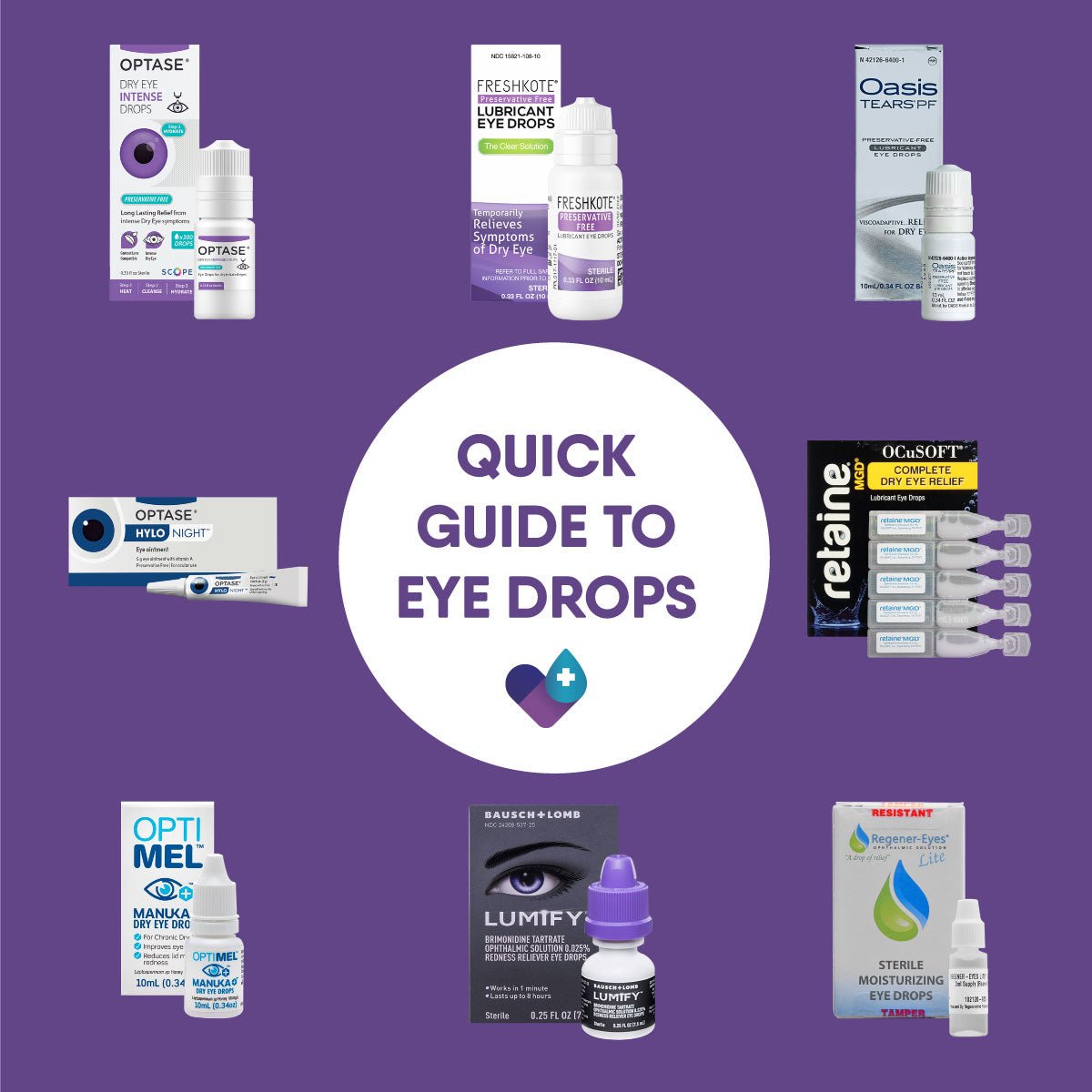The variety of dry eye drops on the market can be daunting. The eye drop section at your local pharmacy can make you go dizzy!
Because different drop ingredients treat different dry eye conditions, it's important to discover the root cause of your dry eye so you know which drop will be the best fit. If you would like a full dry eye evaluation, you can find a dry eye specialist here.
If you already know what works for you, this quick guide will break them down so you have enough information to make the right choice next time you're shopping for drops.
Preservative vs. Non-Preservative drops
Preservatives are added to some eyedrops to prolong shelf life. You can use eyedrops with preservatives up to four times a day. But using preservative drops more often can cause eye irritation, therefore limiting use to twice a day will be best.
Non-preservative eyedrops come in packages that contain multiple single-use vials such as Blink Tears or bottles. After you use a vial, you throw it away. If you rely on eyedrops more than four times a day, non-preservative drops are safe and recommended.
Ointments
Lubricating eye ointments coat your eyes, providing longer-lasting relief from dry eyes. These products however, are thicker than eyedrops and can cloud your vision. For this reason, ointments are best used just before bedtime. Eyedrops can be used at any time and won't interfere with your vision. Hylo Night and Retaine PM are the most popular nighttime ointments and are preservative-free.
Hyaluronic Acid (HA) drops
Hyaluronic Acid drops have increased in popularity with dry eye patients due to its water retention and lubrication properties. These drops tend to stay on the eye longer than standard drops thus reducing the number of applications needed throughout the day. Optase Intense and Oasis Tears are the most popular in this category.
Redness reducing drops
It's best to avoid these as your solution for dry eyes, as prolonged use can cause more irritation and redness. Lumify uses a different mechanism of action and is considered a better option over Visine or other vasoconstriction products.
Over-the-counter or Prescription drops
If you're finding yourself using OTC eye drops on a daily basis, it might be worth having a dry eye evaluation where you could be given a prescription drop, depending on the type of dry eye diagnosis. While OTC eye drops are more easily accessible and have a much lower cost, prescription drops have different types of medications that can help treat the underlying cause of your dry eye symptoms.
Need help choosing the right drop for your condition or need a full dry eye evaluation? Find a dry eye specialist in your area here.

